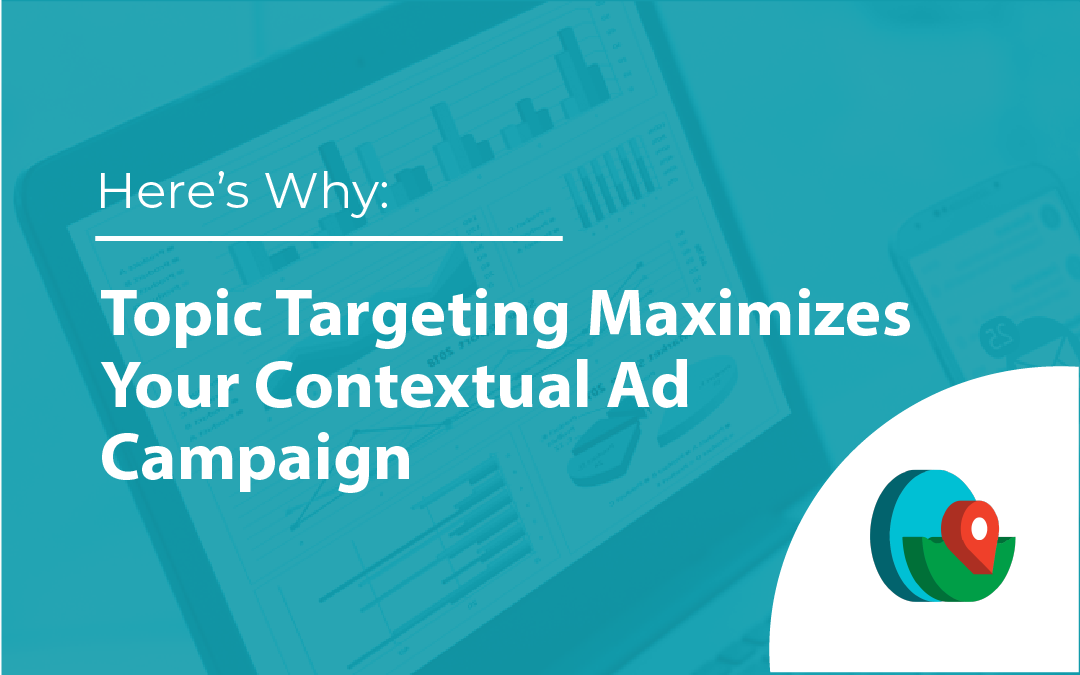You’ve been there. You set up a new ad campaign, full of hope. You check the results a week later, and your budget has evaporated. Worse, your ads showed up in all the wrong places.
It feels like you’re just shouting into a loud, crowded room. But what if you could whisper your message directly to the right person at the perfect moment? This is the promise of effective topic targeting, a smarter way to run contextual ads.
By moving beyond simple keywords, true topic targeting lets you connect with people based on the actual meaning and theme of the content they’re enjoying. It’s a complete game changer for your display advertising strategy.
Table Of Contents:
- What Exactly Is Topic Targeting, Anyway?
- Why You Should Care About This Strategy
- Putting Topic Targeting into Action: A Simple Guide
- When Is the Best Time to Use This Strategy?
- Common Mistakes to Avoid with Topic Targeting
- Conclusion
What Exactly Is Topic Targeting, Anyway?
Think of topic targeting as the art of placing your ads in the right neighborhood. Instead of just looking at street signs, you’re looking at the whole vibe of the area. It’s a method for showing your ads on web pages across the Google Display Network that are about specific subjects or themes.
This contextual targeting approach works by analyzing the semantic meaning of an article’s content. It understands the ideas, not just the words written on the page. This means you connect with a topic audience that is actively engaged with subjects related to your brand.
For example, imagine an article about LeBron James’s latest business venture. The article might not even use the word “basketball” once. But a smart system knows the page is contextually related to topics like “Basketball,” “NBA,” and the “Lakers.” This is how topic targeting work, through intelligent theme matching.
This is where it gets interesting. Targeting keyword strategies might miss this opportunity completely if the specific words aren’t present. But the topic targeting option catches it because it understands context, helping your display campaigns find the right home.
| Targeting Method | How It Works | Best For |
|---|---|---|
| Keyword Targeting | Matches your ads to pages containing specific keywords you select. It is very literal. | Niche products where specific terminology is always used by the target audience. |
| Placement Targeting | Lets you hand-pick specific websites, YouTube channels, or apps where you want your ads to appear. | When you know the exact individual placements that your ideal customers visit. |
| Topic Targeting | Places ads on pages that fall under broad topic categories, regardless of specific keywords. | Reaching a broad audience interested in a subject to build brand awareness and scale campaigns. |
Why You Should Care About This Strategy
You might be thinking this sounds neat, but what does it mean for your bottom line? The benefits are very real and can directly impact the success of your display ads. It’s about making your ad spend work smarter, not just harder.
Let’s break down the three biggest reasons this targeting method is so powerful. These aren’t just theories; they’re practical advantages for your business. You get more relevance, better performance, and a future-proof plan.
It Delivers Pinpoint Relevance
People are tired of ads that interrupt them. They want content that adds to their experience. When your ad appears next to a related article, it doesn’t feel like an interruption; it feels like a helpful suggestion from a brand that understands them.
This boosts your brand’s reputation and supports commerce growth. According to a study referenced by Forbes, consumers view contextually placed ads as more interesting and less intrusive. These relevant ads blend in naturally with content relevant to the user’s interests.
This improves the entire user journey on the display network. Your ad becomes part of their discovery process for specific topics. That builds a foundation of trust with your target audience before they even click.
It Boosts Your Campaign Performance
Relevance is nice, but results are what matter. Luckily, the two go hand in hand. Topic targeting helps because when people see an ad that directly relates to what they’re reading, they are much more likely to engage with it.
Think about it. If you’re reading a review of the latest hiking boots, an ad for waterproof socks is highly relevant. You’re already in that mindset, so the ad feels less like a sales pitch and more like a solution, leading to more clicks and conversions.
This focus leads to higher click-through rates (CTRs) and a better return on your ad spend. You are no longer wasting impressions on people with zero interest in your offer. Every dollar of your campaign budget has a much greater chance of reaching a receptive, relevant audience on high traffic websites.
It’s Built for a Privacy-First World
Let’s talk about the elephant in the room: third-party cookies are disappearing. The old way of tracking users across the internet is coming to an end. This has sent many advertisers who rely on precise targeting through audience targeting into a panic.
But ads topic targeting does not require personal data or cookies. Its logic is based on the content of the page, not the identity of the person reading it. This makes it a sustainable strategy that respects user privacy while still offering an amazing targeting capability.
By adopting it now, you’re not just getting better results today. You’re building a marketing approach that will work long into the future, as Google’s Privacy Sandbox initiative continues to reshape digital ads. This is how you stay ahead of the curve without needing sensitive data points like parental status.
Putting Topic Targeting into Action: A Simple Guide
Getting started with topic targeting in your Google Ads account is more straightforward than you might think. You just need a clear understanding of your target users and your campaign goals. Let’s walk through the steps to get this targeting option working for you.
Step 1: Brainstorm Your Core Topics
First, put yourself in your customer’s shoes. What content topics are they thinking about right before they need your product? Your goal is to map out their interests and identify the content relevant to their needs.
If you sell high-end kitchen knives, your topics might be “gourmet recipes,” “culinary schools,” or “kitchen renovation ideas.” If you offer financial planning services, you might focus on “retirement planning,” “investment strategies,” or “market news.” Platforms like Google Display often provide a list of existing topics to get you started.
Don’t just think about your product; think about the lifestyle and problems surrounding it. This broader view will give you a rich list of potential targeting topics to test. Write down everything you can think of before you start to set up your campaigns.
Step 2: Build Your Topic Segments
Once you have your list, it’s time to create segments in your advertising platform. A segment is just a bucket that holds a group of related topics within an ad group or ad set. This helps you organize your campaigns and track performance more effectively.
Most modern ad platforms have a feature for this. When you campaigns set up, you’ll start typing a targeting topic, like “gardening,” and the system will suggest related sub-topics. You might see “organic gardening,” “vegetable gardening,” or “landscaping tools.”
You should select a healthy number of topics relevant for each segment. This is important for ensuring you have enough traffic coverage and potential ad placements. The platform will often give you an estimate of weekly impressions to guide you as you select topic choices.
Step 3: Apply Topics to Your Campaign
With your segments ready, you can now apply them to a campaign. This is the topic targeting place in your campaign settings. You typically have two powerful options: including and excluding, both incredibly useful for refining your reach.
Including a topic segment means your display ads will only show on pages that match those themes. This is the primary way you’ll use this feature. It’s how you zero in on your target audience and show them ads on relevant sites.
Excluding topics is just as valuable and functions like using negative keywords in search ads. A family-friendly airline brand might want to exclude content about “plane crashes.” This gives you greater control over the context where your ads appear, protecting your brand from undesirable individual placements.
Step 4: Launch and Refine
No campaign is perfect right out of the gate. The final step is to launch your campaign and pay close attention to the data. This is where you learn what really works and optimize for better ad delivery.
Check which topics are driving the most clicks and conversions. You might find that “home brewing techniques” performs much better for your coffee brand than “sustainable living.” The data from your ad group will show you the way.
Use these insights to adjust your topic segments or your maximum bid for certain topics. You might choose to select maximum exposure for high-performing topics while pausing what isn’t working. This continuous loop of testing and refining separates good campaigns from great ones.
When Is the Best Time to Use This Strategy?
Topic targeting ads are versatile, but they truly shine in certain situations. Understanding when to use them can give you a significant edge over the competition. It’s all about timing and context to reach broad audience segments effectively.
You can connect with your audience during key moments when their attention is at its highest. This lets you ride the wave of popular interest. It places your brand right in the middle of a cultural conversation.
Think about big events like awards season or the Olympics. A fashion brand could target articles about red-carpet styles. A sports drink company could target content about track and field events. The possibilities for targeting Google users interested in these events are huge.
This also works wonders for holidays or political events. By aligning your message with what’s on people’s minds, your brand becomes more memorable. It’s a great alternative or supplement to other channels like Facebook Ads, where contextual relevance is less of a factor.
Finally, this is a fantastic strategy for niche products. If you sell a very specific item, like custom-made parts for vintage cars, broad advertising is wasteful. Topic targeting helps you find the small but passionate communities that represent your entire market, a task that would be difficult with targeting keyword strategies alone.
Common Mistakes to Avoid with Topic Targeting
While powerful, topic targeting is not a magic bullet. To get the best results, you need to avoid some common pitfalls. Being aware of these can save your campaign budget from being wasted.
One major error is setting up your targeting topic selections and then forgetting about them. Active monitoring is essential to understand what is and isn’t working. Regular check-ins allow you to optimize your ad spend and shift budget towards the best-performing topics.
Another mistake is being too general with your choices. Selecting a broad audience category like “News” or “Autos” without adding layers or exclusions is a recipe for low performance. Your ad could show up next to completely irrelevant content within that vast category.
On the flip side, being too specific can also be a problem. If you select very niche topics, you may not get enough traffic coverage for your campaign to even start serving ads. It’s about finding the right balance between reaching a broad audience and achieving precise targeting.
Forgetting to use negative topics is another frequent oversight. Just as negative keywords are vital for search ads, negative topics are crucial for display campaigns. This helps prevent your ads from appearing next to sensitive or off-brand content.
Lastly, it is important to consider the targeting cost associated with certain popular topics. More competitive topics target may have a higher cost-per-click, which affects your overall topic targeting cost. You must account for this in your max bid strategy and overall campaign budget to ensure profitability.

Conclusion
Wasted ad spend is frustrating. Showing up in the wrong places can damage your brand and burn through your budget. But it doesn’t have to be this way. Effective display advertising is about being a welcome guest, not an unwanted pest. If there is such thing as a magic bullet…. That would be it!
By using topic targeting, you meet your audience in the right place, at the right time, with the right message. You respect their privacy while improving campaign performance with one of the best targeting options available. This is the path to building sustainable growth and connecting with customers in a meaningful way.
Give your contextual campaigns the focus they deserve with a smart topic targeting strategy. You’ll stop shouting into the void and start having productive conversations with the people who need you most. This is how targeting helps build a better connection with your ideal customer.

